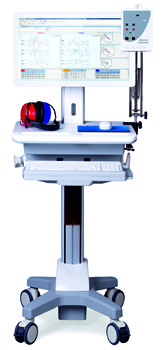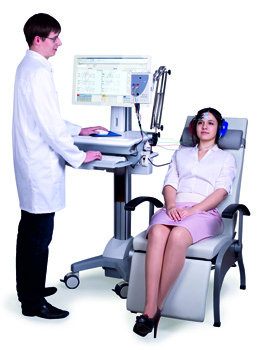- Have any question? Do not wait! Call us please ...
- +98 21 8870 69 91
- info@RMNmed.com
Electrophysiology systems

Infant hearing screening systems
2018-04-10
Hearing aid and Cochlear implant batteries
2018-04-10Electrophysiology systems
Electrophysiological tests monitor the activity of patient brain and/or auditory nerves in response to a sound stimulus.
These tests involve the placement of electrodes on the skin of the head and neck, which monitor the automatic activity of your auditory system in response to sounds such as ‘clicks’ or short tone bursts that are presented via headphones. The procedure is completely non-invasive and patient is required to do little more than relax. Electrophysiological tests may be used when a client is unable to complete a normal hearing assessment, when the results obtained in an assessment are highly inconsistent, or as part of the differential diagnosis of some hearing disorders.
An example of this type of testing is the Auditory Brainstem Response, which is used to screen the hearing of newborns. In brief Electrophysiological testing is used to evaluate hard to test individuals. For example, infants cannot respond when they hear a noise so they have to be evaluated using different means. Hearing professionals are qualified to perform several types of electrophysiological testing, two of the most common tests performed are Auditory Brainstem Response (ABR) and Otoacoustic Emissions (OAE). Compete diagnostic, clinical Electrophysiology systems can do a full range of objective and subjective techniques for the diagnostics of acoustic and vestibular analyzer affection, hearing threshold with one small unit now! With using this devices, hearing and medical professionals can perform ABR, ASSR, multi-ASSR, M LR, LLR/CAEP, TEOAE, DPOAE, SOAE, ECochG, VEMP, P300, MMN, pure tone audiometry techniques easily.


